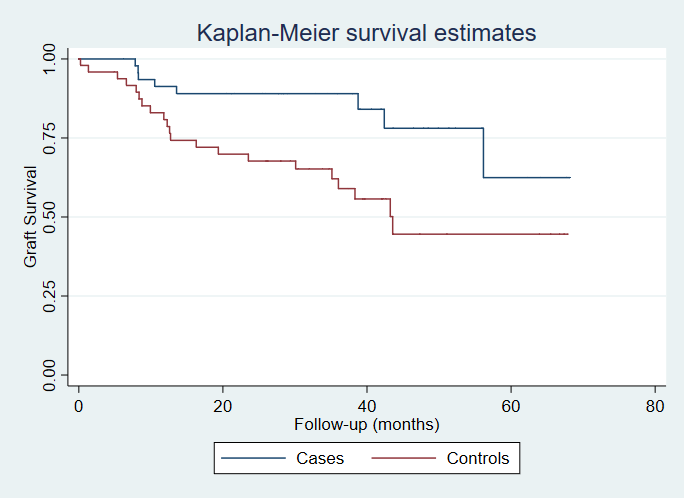Calcium Phosphate Crystals: An Under Recognized Cause of Kidney Allograft Injury?
Vanderbilt University Medical Center, Nashville, TN
Meeting: 2020 American Transplant Congress
Abstract number: C-065
Keywords: Biopsy, Graft function, Kidney transplantation
Session Information
Session Name: Poster Session C: Kidney Complications: Non-Immune Mediated Late Graft Failure
Session Type: Poster Session
Date: Saturday, May 30, 2020
Session Time: 3:15pm-4:00pm
 Presentation Time: 3:30pm-4:00pm
Presentation Time: 3:30pm-4:00pm
Location: Virtual
*Purpose: Calcium phosphate (CaPhos) crystals are a known cause of dysfunction in native kidneys. Our objectives were to describe the incidence of CaPhos crystal deposition in kidney allografts and to examine its relationship with long-term allograft loss.
*Methods: We reviewed adult (>16y) kidney allograft biopsies obtained for cause at a single center from 2014-2017. We identified patients with biopsy findings of nephrocalcinosis or CaPhos crystals. Patients with calcium oxalate (CaOx) crystals were excluded. For controls, adult transplant patients without CaPhos or CaOx crystals were randomly selected after 1:1 matching for similar other histopathologic features. Clinical characteristics and outcomes of interest were abstracted from the medical record. Data were analyzed using summary statistics, and two sample t-test, Kruskal-Wallis test and chi-squared test, as appropriate, were used to compare groups. Kaplan-Meier estimates for death-censored graft survival were generated.
*Results: Of 477 biopsies reviewed, 49 (10%) were identified as having CaPhos crystals (cases). Patient characteristics include: mean age 46y, 69% male, 49% white, 18% with DM as cause of ESKD, mean baseline SCr 1.5mg/dl, 73% on Phos supplements, 18% on ACE-I/ARB, mean time from transplant to biopsy 43 mos, 86% biopsied for acute kidney injury. Labs at time of biopsy were: mean SCr 2.6mg/dl, Ca 9.5mg/dl, Phos 3.1 mg/dl. Clinical characteristics of cases were not significantly different compared to controls, except that cases were more likely to be on Phos supplements (p<0.001). Among cases, 18 had CaPhos crystals with associated acute tubular injury of whom 12 had no additional pathologic findings. The mean number of CaPhos crystals per biopsy core was 3.4. Mean follow-up time was 33mos vs 30mos for cases and controls, respectively. There were 8 cases and 21 controls who developed death-censored graft loss over the follow-up period (p<0.01).
*Conclusions: In this single-center study, we found that CaPhos crystals are not an uncommon finding in kidney allografts biopsies and can cause acute tubular injury. However, the presence of CaPhos crystals does not appear to be a risk factor for long-term allograft loss.
To cite this abstract in AMA style:
Naik RH, Ramos E, Paueksakon B, Anand M, Fogo A, Concepcion BP, Lusco M. Calcium Phosphate Crystals: An Under Recognized Cause of Kidney Allograft Injury? [abstract]. Am J Transplant. 2020; 20 (suppl 3). https://atcmeetingabstracts.com/abstract/calcium-phosphate-crystals-an-under-recognized-cause-of-kidney-allograft-injury/. Accessed December 15, 2025.« Back to 2020 American Transplant Congress

